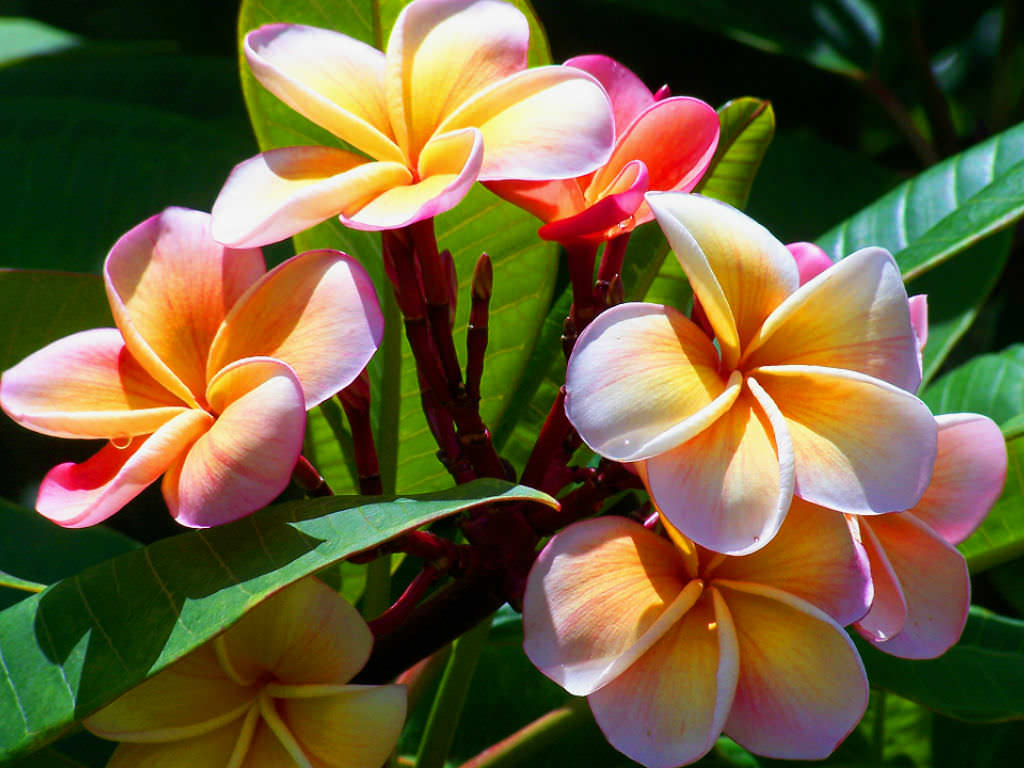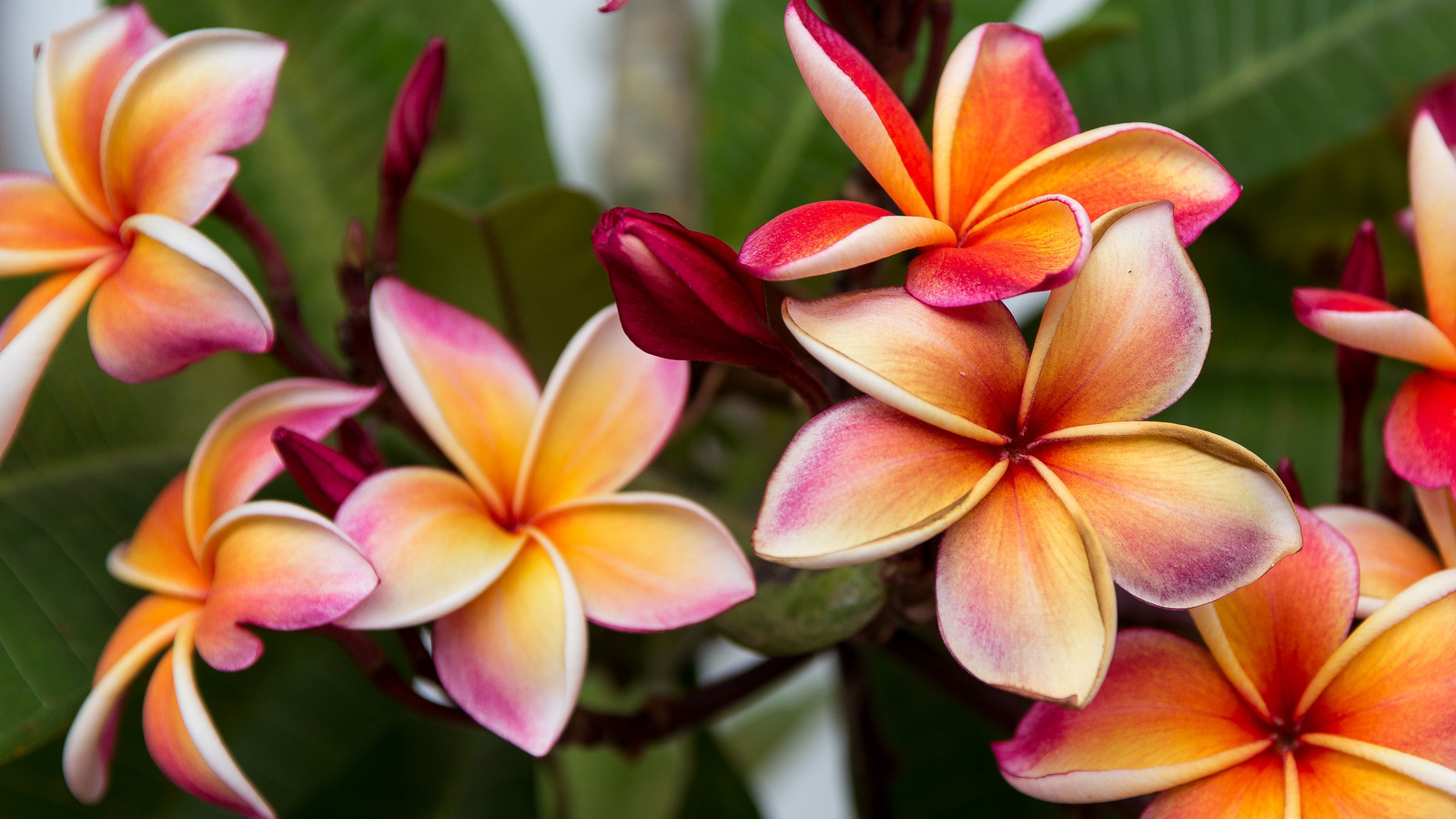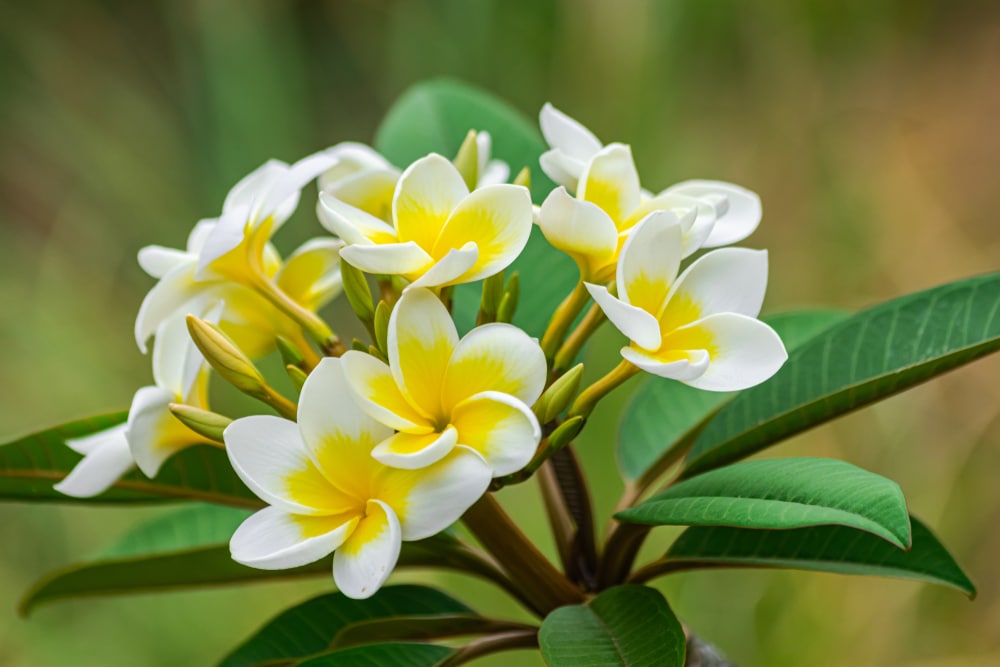Understanding the Plumeria Plant’s Needs
Plumeria plants are known for their beautiful, fragrant flowers, but getting them to bloom can be a challenge. To increase the chances of successful flowering, it’s essential to understand the basic requirements of plumeria plants. Light, water, temperature, and fertilization are all critical factors that impact the plant’s ability to produce flowers.
When it comes to light, plumeria plants prefer full sun to partial shade. Direct sunlight for at least 6 hours a day is ideal, but it’s also important to provide some shade, especially in warmer climates, to prevent scorching. Watering is also crucial, as plumeria plants prefer well-draining soil and should be watered regularly, but not excessively. Overwatering can lead to root rot and other problems that can prevent flowering.
Temperature is another important factor, as plumeria plants prefer warm temperatures between 65°F and 90°F (18°C and 32°C). They can tolerate some frost but may go dormant in colder temperatures. Fertilization is also vital, as plumeria plants require a balanced diet of nutrients to promote healthy growth and flowering. A fertilizer with a balanced N-P-K ratio (nitrogen-phosphorus-potassium) is recommended, and it’s best to fertilize during the growing season (spring and summer).
By providing the right conditions, including adequate light, water, temperature, and fertilization, you can help your plumeria plant thrive and increase its chances of flowering. However, it’s also important to remember that plumeria plants can be sensitive to extreme weather conditions, pests, and diseases, which can impact their ability to bloom. In the next section, we’ll discuss how to provide the right environment for blooming.
Providing the Right Environment for Blooming
To encourage plumeria plants to bloom, it’s essential to provide the right environmental conditions. High humidity, warm temperatures, and protection from extreme weather conditions are all crucial factors that can impact the plant’s ability to produce flowers.
Plumeria plants thrive in humid environments, typically between 50-70% relative humidity. To maintain the right humidity levels, you can place the plant on a tray filled with water and pebbles or use a humidifier nearby. Warm temperatures are also vital, as plumeria plants prefer temperatures between 75°F and 85°F (24°C and 30°C) during the day and no lower than 65°F (18°C) at night.
Protection from extreme weather conditions is also essential. Plumeria plants can be sensitive to strong winds, frost, and intense sunlight. If you live in an area with harsh weather conditions, consider providing a greenhouse or a sunroom for your plumeria plant. Alternatively, you can bring the plant indoors during the winter months or use a frost blanket to protect it from frost.
In addition to providing the right environmental conditions, it’s also important to ensure good air circulation around the plant. This can be achieved by pruning the plant regularly and removing any dead or damaged branches. Good air circulation can help prevent fungal diseases and promote healthy growth.
By providing the right environment for your plumeria plant, you can increase its chances of blooming. However, it’s also important to remember that fertilization plays a critical role in promoting plumeria flowering. In the next section, we’ll discuss the importance of fertilization and how to choose the right fertilizers for your plumeria plant.
The Role of Fertilization in Plumeria Flowering
Fertilization plays a crucial role in promoting plumeria flowering. Plumeria plants require a balanced diet of nutrients to produce healthy growth and blooms. A fertilizer with a balanced N-P-K ratio (nitrogen-phosphorus-potassium) is recommended, as it provides the necessary nutrients for plant growth and flowering.
When choosing a fertilizer for your plumeria plant, look for a product that is specifically formulated for flowering plants. These fertilizers typically have a higher phosphorus content, which promotes blooming. You can also consider using a fertilizer that is high in potassium, as this can help promote healthy root growth and overall plant development.
It’s also important to consider the frequency of fertilization. Plumeria plants typically require fertilization during the growing season (spring and summer), when they are actively producing new growth. During this time, you can fertilize your plumeria plant every 2-3 weeks. However, during the dormant season (fall and winter), you can reduce fertilization to once a month.
In addition to using a balanced fertilizer, you can also consider adding other nutrients to promote plumeria flowering. For example, you can add a bloom booster or a fertilizer that is high in micronutrients, such as iron or magnesium. These nutrients can help promote healthy growth and flowering.
By providing your plumeria plant with the right nutrients, you can encourage healthy growth and flowering. However, it’s also important to remember that pruning is an essential part of promoting plumeria flowering. In the next section, we’ll discuss the pruning techniques that can help promote plumeria flowering.
Pruning Techniques to Encourage Blooming
Pruning is an essential part of promoting plumeria flowering. By pruning your plumeria plant regularly, you can encourage healthy growth, promote blooming, and maintain the plant’s shape. Here are some pruning techniques to help encourage blooming:
Remove dead or damaged branches: Dead or damaged branches can prevent the plant from producing new growth and flowers. Remove any dead or damaged branches to promote healthy growth and encourage blooming.
Shape the plant: Plumeria plants can become leggy if not pruned regularly. Shape the plant to allow for good air circulation and promote healthy growth. Cut back any long branches to encourage branching and promote blooming.
Thin out the center: Plumeria plants can become dense and crowded if not thinned out regularly. Thin out the center of the plant to allow for good air circulation and promote healthy growth.
Prune after blooming: After the plumeria plant has finished blooming, prune it back to encourage new growth and promote future blooming.
Pruning is a critical part of promoting plumeria flowering. By pruning your plumeria plant regularly, you can encourage healthy growth, promote blooming, and maintain the plant’s shape. However, it’s also important to remember that pest and disease management is crucial for healthy blooming. In the next section, we’ll discuss common pests and diseases that can affect plumeria plants and provide tips on how to manage them.
Pest and Disease Management for Healthy Blooms
Plumeria plants are susceptible to various pests and diseases that can prevent them from blooming. To promote healthy blooming, it’s essential to manage these pests and diseases effectively. Here are some common pests and diseases that can affect plumeria plants and tips on how to manage them:
Common pests: Mealybugs, spider mites, and scale insects are common pests that can infest plumeria plants. These pests can cause damage to the plant’s leaves and flowers, preventing them from blooming. To manage these pests, use insecticidal soap or neem oil, and make sure to inspect the plant regularly for any signs of infestation.
Common diseases: Root rot, leaf spot, and powdery mildew are common diseases that can affect plumeria plants. These diseases can cause damage to the plant’s roots, leaves, and flowers, preventing them from blooming. To manage these diseases, use fungicides, and make sure to provide good air circulation and water the plant properly.
Prevention is key: To prevent pests and diseases from affecting your plumeria plant, make sure to provide good air circulation, water the plant properly, and inspect the plant regularly for any signs of infestation or disease.
Use organic methods: Whenever possible, use organic methods to manage pests and diseases. This will help prevent the use of harsh chemicals that can harm the plant and the environment.
By managing pests and diseases effectively, you can promote healthy blooming in your plumeria plant. However, it’s also important to remember that repotting and soil considerations are crucial for healthy growth and blooming. In the next section, we’ll discuss the importance of repotting plumeria plants and provide guidance on choosing the right soil mix.
Repotting and Soil Considerations for Plumeria
Repotting is an essential part of plumeria care, as it allows the plant to grow and thrive in a fresh potting mix. Plumeria plants typically need to be repotted every 2-3 years, as their roots can become pot-bound and prevent the plant from absorbing nutrients.
When repotting your plumeria plant, choose a pot that is only slightly larger than the previous one. This will help prevent the soil from becoming too wet and reduce the risk of root rot. Use a well-draining potting mix that is specifically designed for tropical plants like plumeria.
The right soil mix is crucial for plumeria plants, as it provides the necessary nutrients and support for healthy growth and blooming. Look for a potting mix that contains a balanced blend of nutrients, including nitrogen, phosphorus, and potassium. Avoid using regular garden soil, as it can compact and prevent proper drainage.
Some good ingredients to look for in a plumeria potting mix include:
Peat moss or coconut coir: These ingredients help retain moisture and provide a slightly acidic pH.
Perlite or vermiculite: These ingredients improve drainage and prevent waterlogging.
Fertilizers: Look for a potting mix that contains a balanced fertilizer, or add your own fertilizer according to the manufacturer’s instructions.
By repotting your plumeria plant in a fresh potting mix, you can provide it with the necessary nutrients and support for healthy growth and blooming. However, it’s also important to avoid common mistakes that can prevent plumeria plants from blooming. In the next section, we’ll discuss common mistakes to avoid when growing plumeria.
Common Mistakes to Avoid When Growing Plumeria
When growing plumeria plants, it’s essential to avoid common mistakes that can prevent them from blooming. Here are some common mistakes to avoid:
Over-watering: Plumeria plants don’t like wet feet, so make sure not to over-water them. Check the soil regularly, and only water when it feels dry to the touch.
Under-fertilization: Plumeria plants need regular fertilization to promote healthy growth and blooming. Use a balanced fertilizer, and follow the manufacturer’s instructions for application rates.
Inadequate pruning: Pruning is essential for promoting plumeria flowering. Remove dead or damaged branches, and shape the plant to allow for good air circulation.
Insufficient light: Plumeria plants need bright, indirect light to bloom. Make sure to provide them with enough light, but avoid direct sunlight, which can cause scorching.
Poor soil quality: Plumeria plants prefer well-draining soil that is rich in organic matter. Avoid using regular garden soil, and instead opt for a potting mix specifically designed for tropical plants like plumeria.
By avoiding these common mistakes, you can help promote healthy growth and blooming in your plumeria plant. However, it’s also important to remember that patience and persistence are key to successful plumeria blooming. In the next section, we’ll discuss the importance of patience and persistence when trying to get plumeria plants to bloom.
Patience and Persistence: The Keys to Successful Plumeria Blooming
Getting plumeria plants to bloom can be a challenging and rewarding experience. However, it’s essential to remember that patience and persistence are key to successful plumeria blooming. Plumeria plants can take time to mature and produce flowers, so it’s crucial to be patient and not get discouraged if you don’t see immediate results.
With proper care and attention, plumeria plants can thrive and produce beautiful flowers. However, it’s essential to remember that every plant is different, and what works for one plant may not work for another. Be prepared to experiment and try different techniques to find what works best for your plumeria plant.
Don’t be discouraged if your plumeria plant doesn’t bloom right away. Keep caring for your plant, and with time and patience, you will be rewarded with beautiful flowers. Remember, the journey to getting plumeria plants to bloom is just as important as the destination.
By following the tips and techniques outlined in this article, you can increase your chances of getting your plumeria plant to bloom. However, it’s essential to remember that plumeria blooming is a process that requires time, patience, and persistence. With dedication and care, you can enjoy the beauty and fragrance of plumeria flowers in your own home.







